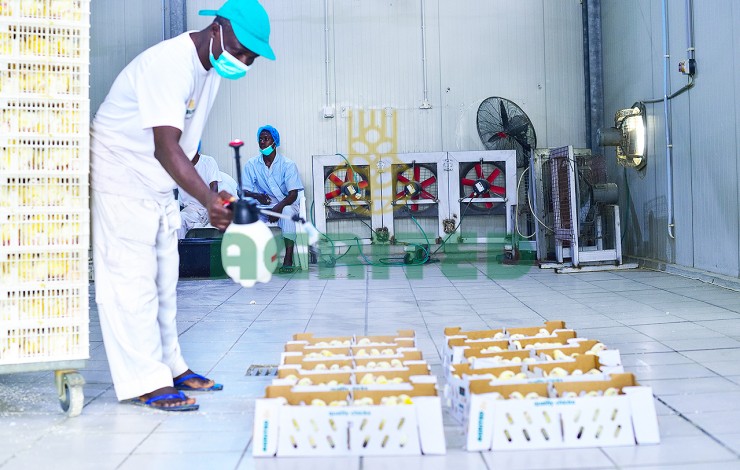Poultry Vaccination Program Principle
Introduction
There are numerous factors in intensive commercial poultry production. A significant one is the control of infectious diseases. Global growth in poultry production, genetic advance in growth rate and intensive management conditions significantly increase risks of infection. Therefore, disease prevention becomes more complicated, requiring methodical planning, detailed knowledge of the pathogens, interaction between different vaccines and appropriate application techniques.
Disease Prevention Is Achieved By 4 Main Measures:
- Biosecurity
- Management
- Feeding
- Proper vaccination program
Issues To Be Addressed In Vaccination Program
- Epidemiology – Risk assessment (what are we facing?)
- Protection parameters – titers; age-associated risk
- Available vaccines - Efficiency, Safety, and Cost
- Optimal vaccination schedule for a particular disease
- Interference issues (such as with respiratory agents: ND-IB- TRT)
- Frequency of vaccinations
- Vaccination timing
- Immunity Optimal duration
Broiler Vaccination Programs – Consideration Points
- Major diseases: Newcastle disease, Infectious Bronchitis and Gumboro
- Monitoring the level and uniformity of maternal immunity by routine day-old
Chick serology
- Knowledge of infectious pressure in the area of farming
- Creating quick onset immunity
- Considering interference to allow necessary intervals between vaccinations
- Choice of correct application and use of equipment
Layer Vaccination Programs – Consideration Points
First 4 weeks
- Major Diseases: ND, IBD, IB, Marek, Salmonella
- Maternal Immunity level; Interference between vaccines
- Need for early onset of immunity, to ensure protection
Next 10 Weeks
- Diseases: ND, IB, AE, Infectious Coryza, Fowl Pox, ILT, EDS, Salmonella.
- Correct intervals between the various vaccinations is required. At least two consecutive applications of same inactivated vaccine are recommended.
- Optimal duration of immunity – in the entire laying period.
Breeder Vaccination Program Main Goals
- Protection during the rearing period
- Protection during production period
- Providing progeny with a high level of maternal immunity.
Summary
- Disease prevention is becoming more complicated and requires a thorough planning based on knowledge of the following aspects:
- Pathogen characteristics
- Infection pressure of the main pathogens
- Pathogenesis of each disease
- Interaction between the different vaccines
- Proper application techniques and suitable equipment
- Monitor your vaccination program periodically by routine serology, PCR and virus isolation
- Make adjustments accordingly.
Do not compromise – buy quality vaccines from a reliable source that has 24/7 cold chain in place.


Leave a Comment